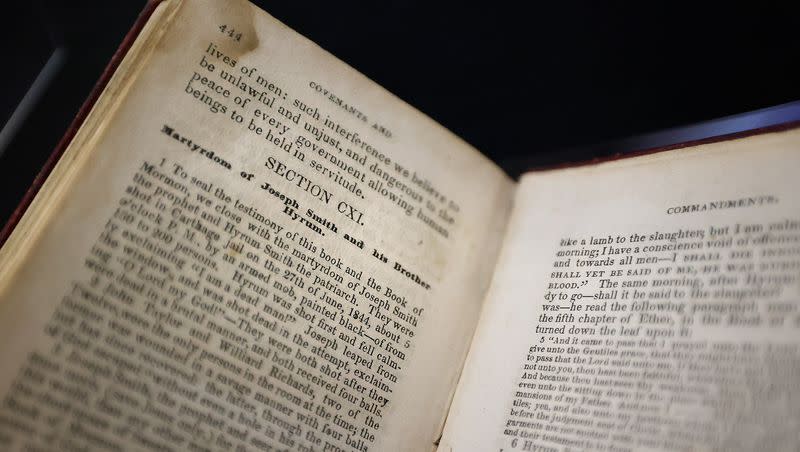A guide: 7 ways to better understand the Joseph Smith Papers

- Oops!Something went wrong.Please try again later.
- Oops!Something went wrong.Please try again later.
The Joseph Smith Papers project’s last section was completed in July, creating a comprehensive history of the early Church of Jesus Christ of Latter-day Saints, including events in the life of its former prophet and president, Joseph Smith.
A conference commemorating the completion of the project will be held Sept. 15-16. More information about the conference can be found on the Joseph Smith Papers website.
Gail Miller, a financial supporter of the project, told the Church News that it’s a valuable resource to help “strengthen testimonies all over the world.”
Other than the documents themselves — which have been collected and organized to be shared and understood — the collection includes media such as podcasts, videos, photographs, illustrations, charts and maps to help “millions know Brother Joseph again.”
Here are seven different resources available to better understand the Joseph Smith Papers:
The search bar
On the homepage of the Joseph Smith Papers project website, the search bar is a good resource as questions and other ideas pop up during your exploration. Using it just like Google, it pulls up any documents or other media of the project related to your search.
Podcasts
Five different podcasts — each with six or eight episodes — were produced from the Joseph Smith Papers project, hosted by the associate managing historian of the project, Spencer W. McBride, who is an expert in religion and American politics.
Each miniseries focuses on a pivotal event of Joseph Smith’s life, including his First Vision of God and Jesus Christ, the restoration of the priesthood, building the Nauvoo Temple, early church life in Kirtland, and finally his death in Carthage. Historians' and church leaders’ voices and explanations set the scene for each event and give insights into surrounding events.
The podcasts are available online and on most streaming services.
Videos
On the Joseph Smith Papers website, there is a collection of 85 videos that vary in length from a few minutes to about 20 minutes, and show the beginnings of the project and give explanations of documents in the collection.
This might be the most useful resource for visual learners.
Each video is titled and grouped into 10 different series, depending on what you want to learn more about:
The Joseph Smith Papers Project.
Documents.
Journals.
Histories.
Administration.
Revelation and translations.
First Vision accounts.
Joseph Smith’s time and place.
Family character sketches.
TV specials.
One video from the documents series includes the volume editor of the project, Matthew C. Godfrey, showing his favorite document.
Also included is a series called “The Joseph Smith Papers” that is on BYU-TV and consists of 93 episodes, each about a half-hour long.
Photographs
The collection’s photo gallery focuses a lot on Joseph Smith’s journals and the early written history of the church. Among the gallery are also the pistols that Joseph and his brother Hyrum had in Carthage Jail and a masonic apron from the 1800s.
Illustrations
Six illustrations are included in the collection that show early drawings and engravings by church members, including the three witnesses to the translation of the Book of Mormon, Joseph Smith’s planned tomb and a map of the city of Nauvoo.
Looking at the illustrations could give you a good place to start while exploring other resources in this guide.
Charts
Another great resource for visual learners is the charts section, which has more than 60 different charts, including timelines of events, relationships between events, comparison charts and organizational structures.
Here’s a list of the different categories to look at:
Overview.
Histories.
Revelations and translations.
General church organizations and officers.
Local church organizations and officers.
Civic organizations and officers.
Nauvoo Legion.
Council of Fifty.
Other charts.
Maps
There is an interactive world map of historical sites, links to photos and links to documents about those specific locations, which can be helpful to make connections. Also in the maps section are more than 50 maps that outline travel and missions, Latter-day Saints’ movements across the United States, early church land purchases, and more.

